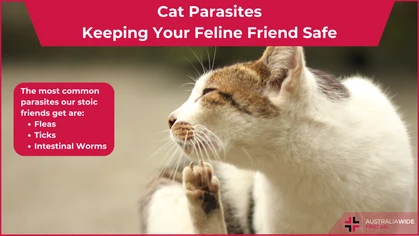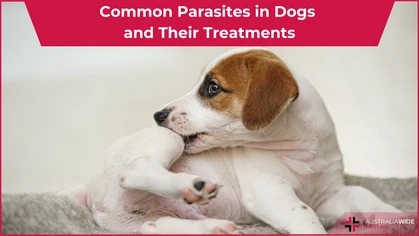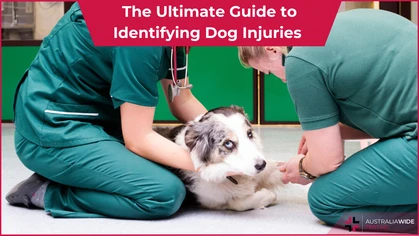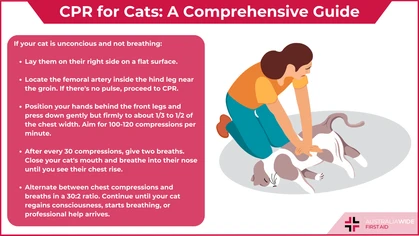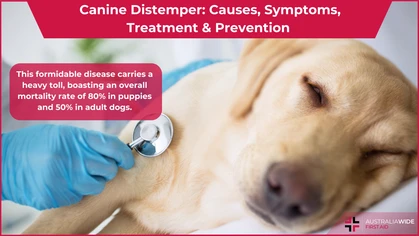First Aid for Insect Stings in Dogs and Cats

Pets
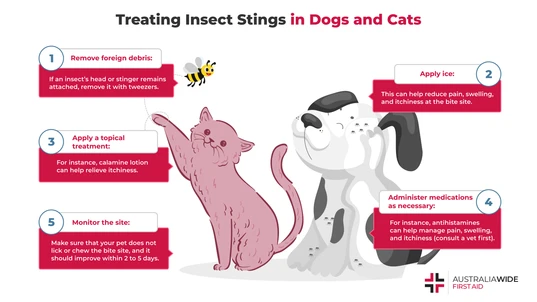
Insect bites and stings are relatively mild injuries for our pets. As pet owners, we can provide first aid to improve comfort and ensure safety.
Insect bites and stings are common in dogs and cats. Fortunately, they do not often represent serious injury and can be managed at home with basic first aid. Below we will review how to identify an insect bite in your pet, first aid treatment, and when to seek professional help from a veterinarian.Identifying a Bite or Sting
Where you and your pet live and play determines the type of insects you are likely to encounter. The possibilities are as varied as the different landscapes in which we reside. The most common biting and/or stinging insects that your pet may encounter are the following:- Ants
- Bees
- Wasps
- Flies
- Dragonflies
- Fleas
- Ticks
- Spiders
First Aid Treatment
- Remove foreign debris: If there is a stinger, remove it. Sometimes the heads of insects, such as ticks and ants, will remain attached. Use tweezers to remove any foreign debris.
- Apply ice: The application of ice or cold therapy to the site of injury reduces swelling, controls itch, and relieves pain.
- Apply a topical treatment: Calamine lotion and baking soda can be applied to the bite or sting to relieve itchiness.
- Administer medications as necessary: Antihistamines and/or corticosteroids may be necessary to reduce swelling and manage pain and itching. Consult a veterinarian regarding correct dosing and frequency of administration.
- Monitor the site: The affected area should improve within 2-5 days. Swelling and redness should decrease. Make sure that your dog does not lick or chew the affected area as this can cause open areas of skin and put them at risk for infection. Most affected areas should be left open to air, but if your pet struggles to leave the site alone, consider applying a dry bandage.
When to Seek Professional Help
A single sting or bite will cause less of a reaction than multiple stings or bites. If your pet has been attacked by a swarm of insects, such as bees or ants, seek care from a professional. Larger doses of toxins from insects can cause allergic or hypersensitivity reactions in dogs and cats which can lead to serious complications such as anaphylaxis. Signs of allergic reaction or poisoning include the following:- Swelling of the face, jowls, lips, or tongue
- Excessive drooling
- Difficulty breathing
- Wheezing
- Disorientation or loss of balance
Conclusion
Insect bites and stings are a common cause of irritation in pets. The goal of first aid for insect bites and stings is to reduce irritation and increase comfort. Unless your pet is showing signs of allergic reaction or worsening symptoms then care can be managed from home. Whenever possible, capture the offending insect to properly identify it. For more information on pet first aid, visit our resource library and check out the following articles:
Originally published at
https://www.australiawidefirstaid.com.au/resources/insect-stings-dogs-and-cats
as part of the Australia Wide First Aid Articles Library




